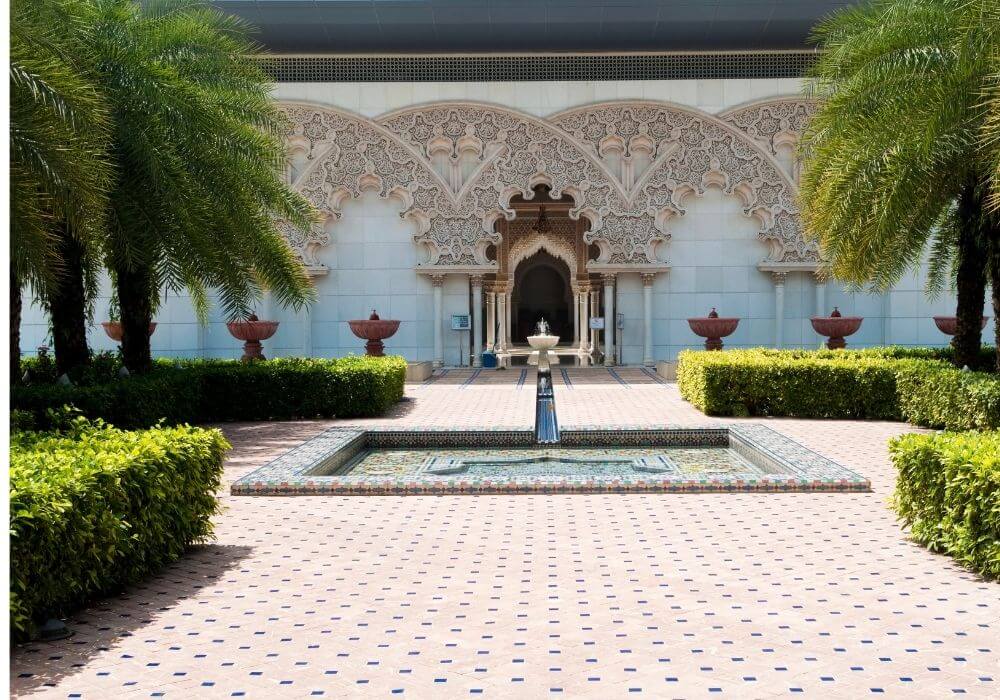
Morocco is worldly renowned for its charm, allure, and character, qualities that are in part due to its enticing and mysterious architecture.
Despite the agitated history of immigration and military conquest, the country has managed to preserve most of its artistic and cultural heritage.
Table of Contents
Moroccan Architecture Design
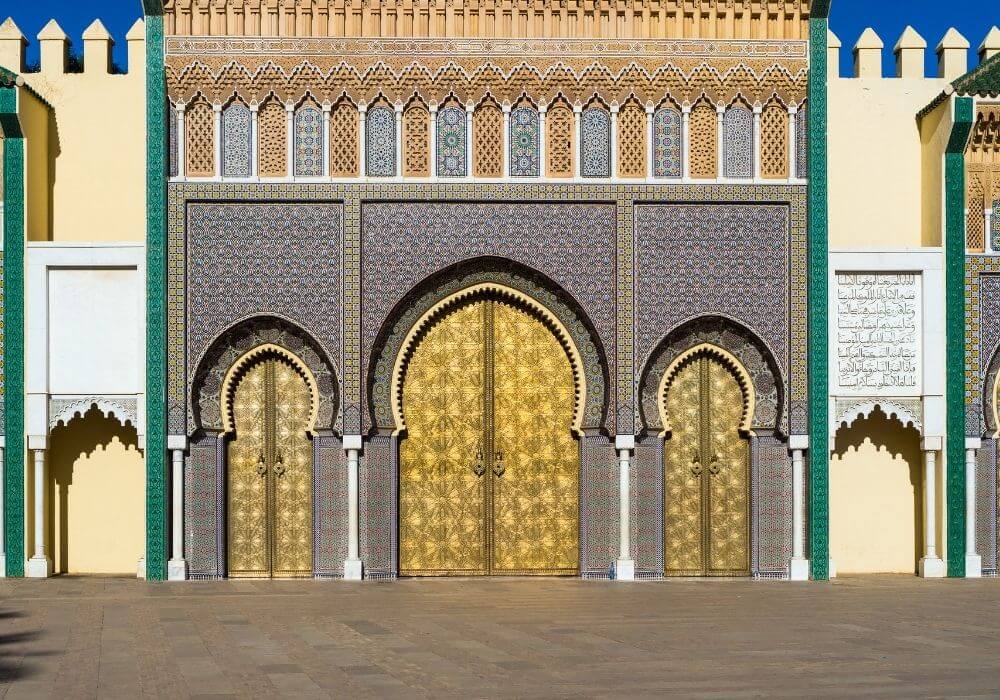
All of the different rulers and caliphates have left their unique mark on the kingdom’s architecture.
From old medinas and squares to more modern European-inspired structures, these buildings and layouts constitute a strong testimonial to Morocco’s rich history and tradition.
The various design elements of traditional Moroccan architecture all have a strong Islamic influence. Whether it’s elaborate geometric patterns that convey symmetry, ornamental calligraphy showcasing Quranic verses, or the stunning and colorful ceramic tile mosaics called zellij.
Characteristics of Moroccan Architecture: Moroccan architecture is characterized by a fusion of styles, each leaving an indelible mark on the landscape. Key elements include:
- Islamic Influence: Islamic architecture heavily influences Moroccan design, featuring geometric patterns, ornate calligraphy, and symbolic motifs that echo Quranic teachings.
- Zellij and Ceramic Tile Mosaics: Elaborate zellij work adorns many structures, using colorful ceramic tiles to create intricate patterns and designs.
- Open Courtyards and Gardens: A hallmark of Moroccan architecture is the presence of open courtyards adorned with lush gardens, providing spaces for relaxation, meditation, and community gatherings.
- Water Features: Meticulously tiled water fountains serve as functional and aesthetic focal points, reflecting Islamic values of cleanliness and tranquility.
- Hispano-Moorish Influence: The architecture showcases a harmonious blend of Arab and European styles, seen in features like white walls, decorative arches, and stucco detailing.
Cultural Significance: Moroccan architecture is deeply intertwined with the culture and values of the region:
- Islamic Spirituality: Mosques are not just places of worship but also centers of community life, embodying the unity and devotion of Moroccan society.
- Privacy and Intimacy: Designs like riads emphasize privacy, reflecting Islamic values of modesty and seclusion while creating sanctuaries within the bustling medinas.
- Historical Significance: Kasbahs, with their defensive structures and communal facilities, tell the story of Morocco’s resilience against external threats and its commitment to communal well-being.
- Educational Heritage: Madrasas, beyond their architectural beauty, represent Morocco’s history of intellectual pursuit, offering lessons in philosophy, law, and spirituality.
Modern Influence and Preservation: While modernization has introduced new architectural styles, Moroccan architecture retains its significance:
- Continued Relevance: Contemporary structures continue to draw inspiration from traditional Moroccan design, maintaining the country’s architectural identity.
- Tourism and Preservation: Historic riads and kasbahs have been repurposed for tourism, enabling visitors to experience Morocco’s architectural legacy firsthand.
Whether it’s mosques, riads, souks, palaces, or ramparts, every structure serves its own purpose and therefore uses different architectural styles. We will cover some of those below in better detail.
Mosques
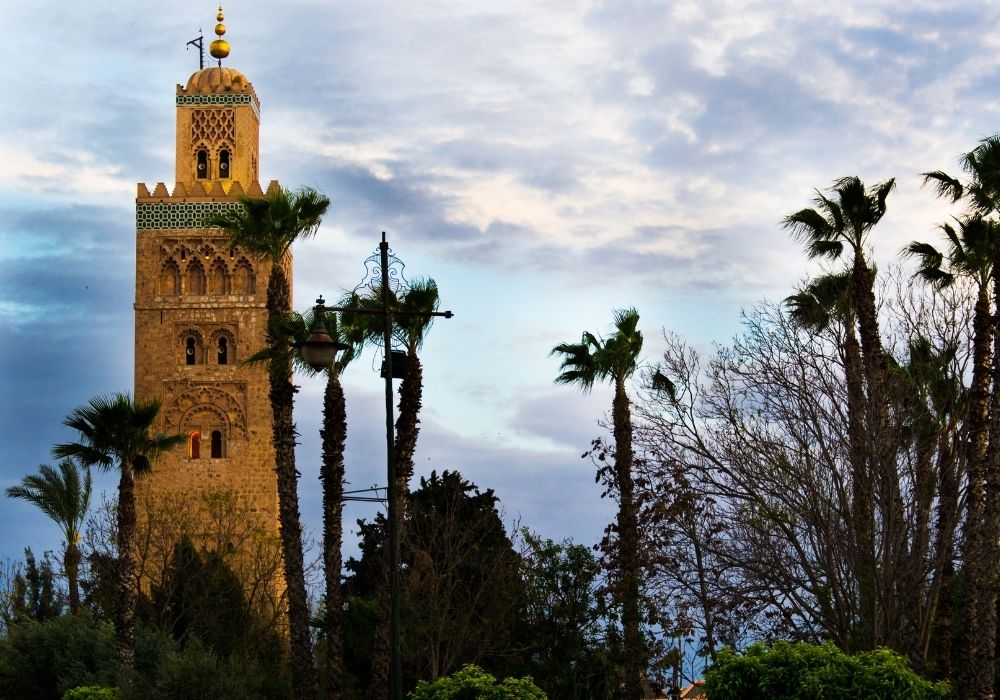
Mosques are perhaps one of the most important components of any structure, be it cities, villages, or town.
No matter how small or low populated a region is, you are guaranteed to find at least one mosque adorned with a tall minaret towering over the space.
Most mosques showcase brilliant designs in water fountains and walls made of small yet charming ceramic tiles or zellij.
One of the dominant colors you will find amongst these facilities is a sharp white, an emerald green, and a royal blue.
The mihrab is one of the vital elements to a mosque, both for its functionality and visual appeal. In fact, all of these mihrabs are semicircular niches, arched arabesques, that are strategically put to determine the kibla.
This is the direction of the Kaaba in Mecca, thus the direction which Muslims should face when praying.
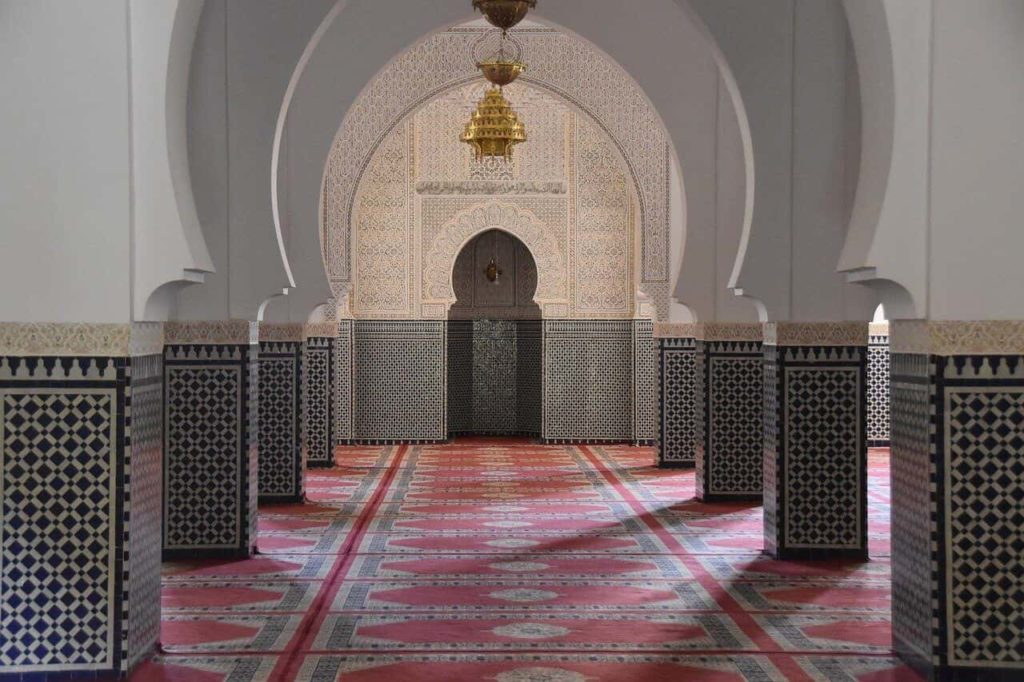
Al Quaraouiyine university and mosque in Fez is one of the oldest and most remarkable mosques in all of Morocco.
Hassan II Mosque in Casablanca, Koutoubia Mosque in Marrakech, and the Grand Mosque in Chefchaouen are close seconds with their towering beauty and revered design.
These tremendous historic monuments attract a multitude of visitors each year, allowing them to tour and celebrate the grandiosity and glory of traditional Moroccan architecture.
Riads
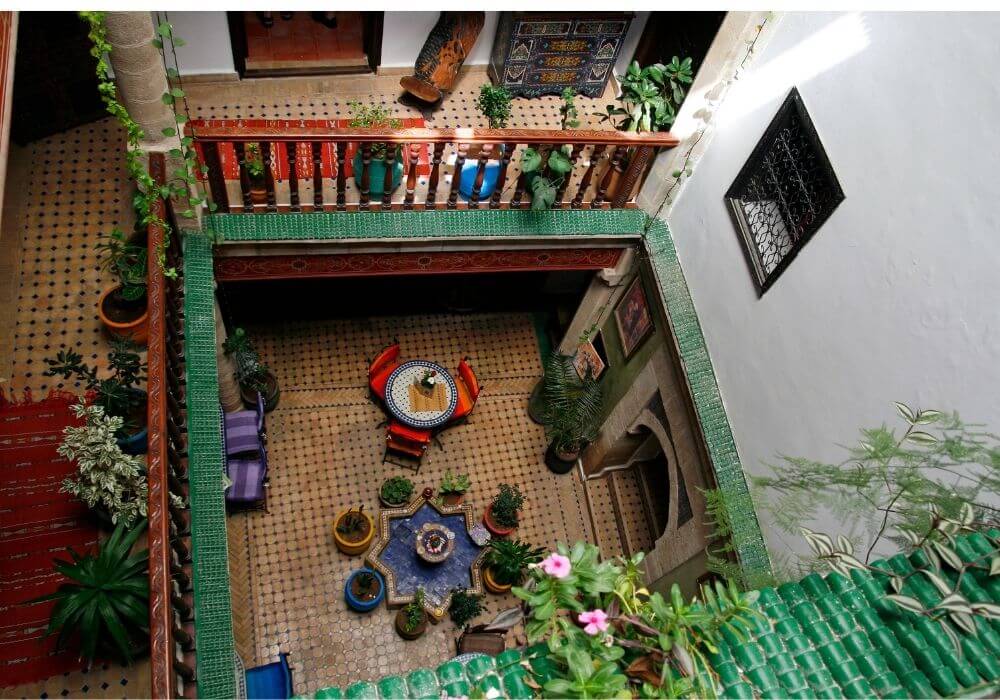
Unlike popular belief, riads were not designed and constructed to accommodate tourists and travelers. These institutes were rather privately owned as one’s home or palace.
As private residences, riads were built to maintain seclusion and intimacy within a person’s household. They’re very inward-driven and focused.
The whole structure is closed off to the outside world, and only open to the focal point, which is a courtyard with a water fountain or a fruit-bearing tree.
Maintaining privacy and seclusion is a very important aspect of Islam. So unlike European-style buildings with huge open windows and large usage of glass, riads are built to protect the intimate setting that is one’s home.
While souks and mosques are more accessible for the public, riads were designed to protect the family both from intrusions and the weather.
Nowadays, many of these have been converted to hotels and restaurants mainly targeted for tourists so they can have a more authentic Moroccan experience.
Kasbahs
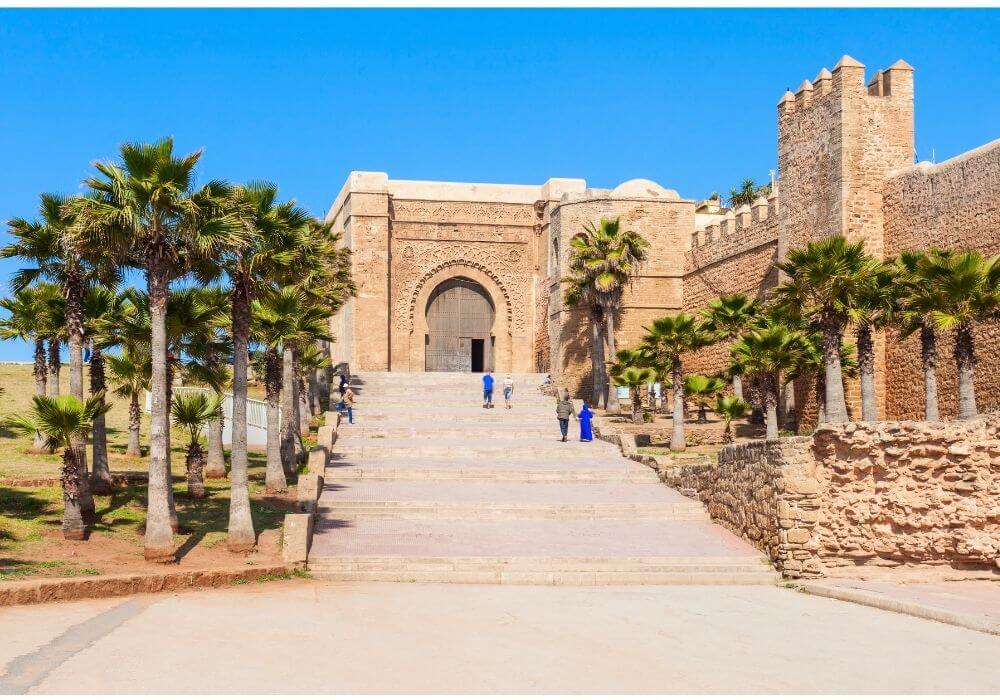
Back in the day, Kasbahs were mainly built for defensive purposes. These fortified cities are known for their colossal size and impressively sustainable design.
They were usually constructed in conjunction with the dominant colors of the city or town’s buildings.
One of the most common features the Kasbahs share is their purpose combined with the rich golden tan coated exterior.
These fortresses can almost be described as a city within a city aimed at protecting the surrounding area from pirate ships and invading forces.
In addition to that, the simple yet energy-efficient construction allows the premises to remain cool during summer and warm during winter.
Moreover, kasbahs would also typically include their own mosque, hammam (public bath), medersa (school), fountain, as well as a communal bread oven.
In keeping with their magnificent and glorious past, kasbahs today perfectly combine extraordinary historic monuments with modern establishments.
Kasbah Bel-Kush in Beni Mellal and Kasbah des Oudayas in Rabat are two of the most marvelous kasbahs in the country, and they’re definitely worth a visit.
Madersas
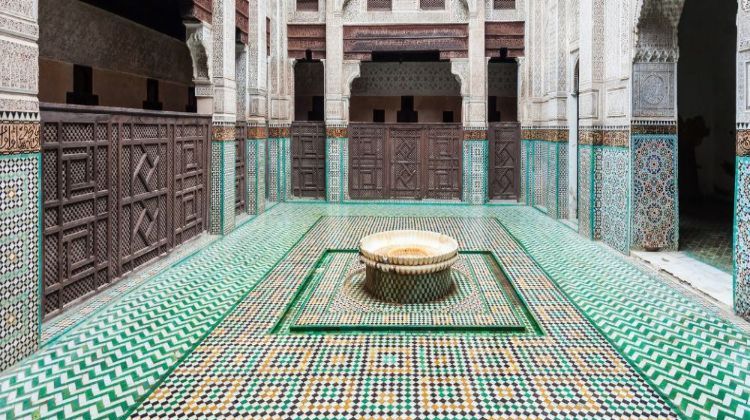
Madrsas were more than just boarding schools for religious teachings. These thriving centers offered large and varied courses on philosophy, law, and astrology.
The architectural structure and design of a madersa are full of dichotomies.
On one hand, wooden dorms where students lived and spent their time off were very modest, and discreet.
On the other hand, the mosque that this facility encompasses is incredibly large and imposing.
Much like the riad construction, medersas also have water features in the center of the courtyard, in addition to lemon or orange trees.
This beautiful space for leisure and relaxation is embellished with delightful white, green, and blue zellij, magnetizing Islamic calligraphy, and ornamental arches with stucco detailing.
The marvelous decor contrast of these medersas is difficult to convey in mere words, so make sure you add the Medersa Bou Inania in Meknes to your bucket list for your next visit!
Related Post: Check out the Architecture of Marrakech Historical Sites
Conclusion
Moroccan architecture stands as a living testament to the country’s rich cultural heritage, blending historical influences with enduring values.
The intricate designs, functional elements, and profound symbolism encapsulate Morocco’s past, present, and future, inviting all to explore its architectural wonders.